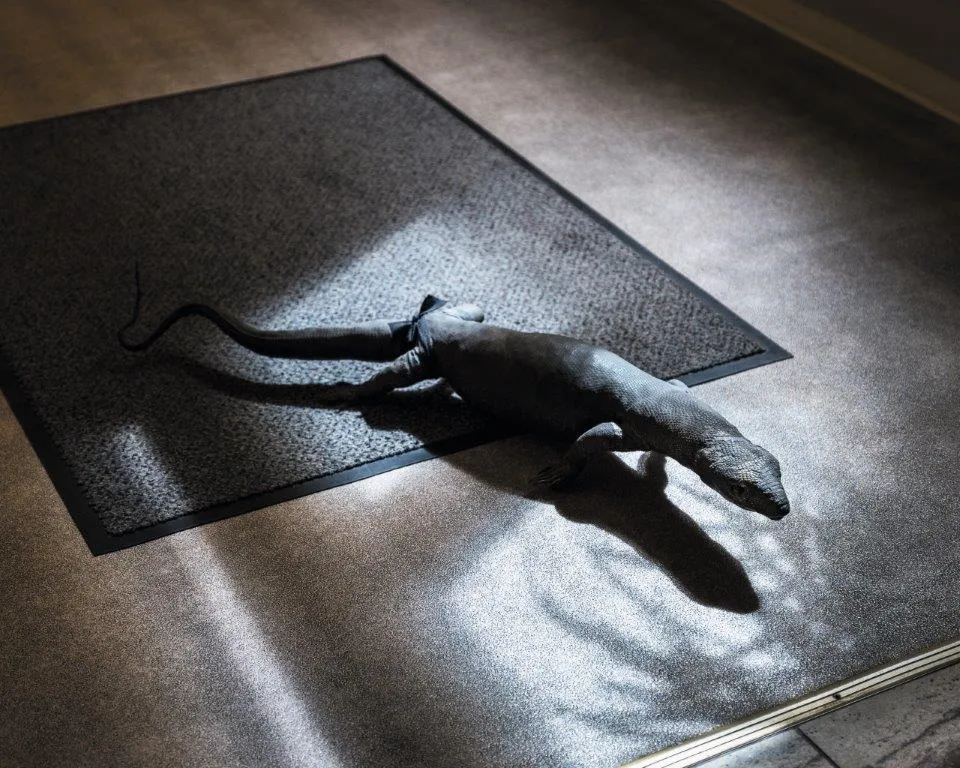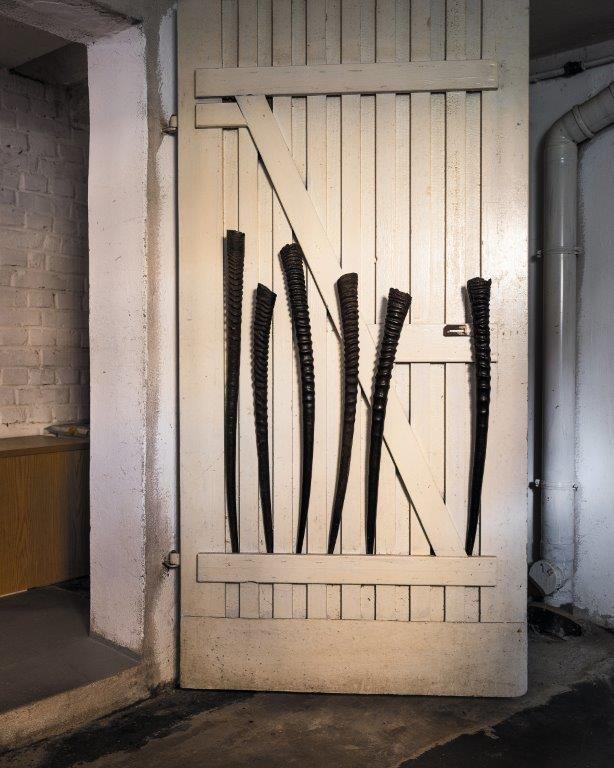
The challenge of dealing with colonial exhibits
Provenance research contributes towards a new understanding of collecting, researching, preserving, and presenting ethnographic objects.
Katja Lembke, director of the Landesmuseum in Hannover, quotes the French art historian Bénédicte Savoy to illustrate the significance of an exhibits' origin: "I want to know how much blood is dripping from a piece of art." Savoy wrote this sentence in her 2019 book "Museums. A Childhood Memory". A year beforehand, together with the Senegalese economist Felwine Sarr, she had co-authored a report for the French President on the restitution of African cultural objects – bringing the topic of provenance research to a wider audience.
A few months earlier, Prof. Dr. Katja Lembke, an archaeologist and egyptologist, was appointed speaker for a collaborative project titled "Provenance Research in Non-European Collections and Ethnology in Lower Saxony (PAESE)", which was launched at her institution in 2018. The State Museum (Landesmuseum) had already taken up the topic in 2016/17 with the special exhibition "Heikles Erbe – Koloniale Spuren bis in die Gegenwart" (A difficult legacy – traces of colonialism until today). Cooperating in the PAESE project are the universities of Hannover and Göttingen, the Landesmuseum (State Museum) Oldenburg, the Städtisches Musuem (Municipal Museum) Braunschweig, the Roemer and Pelizaeus-Museum Hildesheim and the Evangelical Lutheran Mission in Lower Saxony. The Volkswagen Foundation funded PAESE for three years. The large-scale project is now coming to an end – and the results are already having an impact.
In the meantime, the self-image shared in collections and museums has undergone a decisive change. "It is constantly on our minds," says Katja Lembke, "where is an object coming from? Was it bought, given or looted? Has a fair price been paid? Have people been harmed in the process?" Often, the entanglements go deeper; even to the question of where the money came from that was used to pay for artworks commissioned during the colonial era.
Perspectives and methods
"At the outset, many people thought that the curators would be able to clarify provenance on the side," remembers Claudia Andratschke. She studied art history, history and law and has held an autonomous position for provenance research at the Landesmuseum Hannover since 2008. She coordinates both the PAESE project as well as the Network for Provenance Research in Lower Saxony.
At the outset, many people thought that the curators would be able to clarify provenance on the side.
Legal deadlines, for example concerning the restitution of collections from colonial contexts or in the case of Nazi-looted property, have long since expired in formal terms, explains Claudia Andratschke: "Because of this, although legal aspects do offer some guidance, recent provenance research is ultimately based solely on moral-ethical principles and self-obligation. In the case of collections acquired in colonial contexts, this means to reappraise one's own colonial history, disclosing unlawful ownership, creating transparency surrounding collections and their origins in open dialog with representatives of the countries of origin, and in this way creating favorable conditions for restitution."

Many objects, including weapons, everyday objects, taxidermy and jewelry, had been collected by the cocoa plantation manager to form an Africa room, which the family last maintained and expanded in Diera near Meissen. Africa acted as a place of longing, the colonial provenance of the objects was hardly questioned.
The discussions of recent years have certainly called into question the legitimacy of ethnological collections in Europe, she explains – and led to a paradigm shift: "Today, we are no longer simply interested in the objects' regions of origin. We also engage in dialog with the people who live and research there." Communication and cooperation are also pivotal to PAESE. Thus, not only are representatives of disciplines such as history, ethnology and law at German institutions involved, but also experts from countries linked to objects in the respective collections. "We try to be as open as possible, in each case also concerning the choice of expertise and where it can lead to," explains Andratschke. This refers not only to the different perspectives and methods of the disciplines at home, but also the views of people in different cultures.
Collection and collector histories
Moreover, the cultural objects are no longer the sole focus of provenance research – more and more often, researchers want to find out about the people who once gathered the collections. Cultural anthropologist Isabella Bozsa, who is working on her PhD at the Municipal Museum Braunschweig within the context of PAESE, is researching the collection of 700 objects from Cameroon named after a colonial officer called Kurt Strümpell. "It is important that we question his narratives on the basis of contemporary perspectives from the regions of origin." This is first of all affecting the critical view on the contexts of acquisition since Strümpell was involved in colonial campaigns of conquest at the time of numerous appropriations.
It is important that we question his narratives on the basis of contemporary perspectives from the regions of origin.
In 2021, Bozsa also succeeded in attributing three ceremonial objects from the Strümpell collection to the ruler of the Bangwa people in Cameroon, Fontem Asunganyi, the previous owner, and in establishing contact with his descendants. The objects in question are an impressive sword and two staffs decorated with glass beads, which the local ruler wore at festivals and rituals as a sign of his royal authority. "With the help of PAESE, we were able to invite a representative of the Bangua, Chief Charles Taku, to the museum in 2021, and a delegation from the current King Fontem Asabaton is scheduled to visit in 2022," explains the researcher.
...we can now sleep in peace...
During his stay in Braunschweig, Taku made clear how important the opportunity to meet was for him and the Bangwa community: "It is a historical moment for the simple fact that I had the opportunity to talk to my ancestors." He added: "Means we can now sleep in peace that we are now reconciling with this history and the reality of this history." And Isabella Bozsa emphasizes how enriching such an insight into the intertwined history, the spiritual value of the objects and the respective cultural practice related to this has been for her as a researcher. The cooperation shows that collection pieces not only fulfill the functions of describing or representing cultures, but can also form links to their ancestors for the descendants of the previous owners. This must be taken more into account in future museum practice.
Within the context of PAESE, the exchange took place in both directions: Project members led workshops for students in the regions of origin, in order to enter into dialog with future museum managers. Cooperation partners from various countries have also repeatedly visited the collections in Lower Saxony. In 2019, some of them came together at a discussion event held in Hannover, on which occasion Flower Manase, curator at the National Museum of Tanzania in Dar es Salaam, asked straightforwardly: "How can you value someone when you have skeletons of his ancestors in the basement?" She appealed to researchers, "In everything we do, humanity must be at the forefront."

Anne Schönharting has named her project "The Heritage", from which some images accompany the contribution to the PAESE research project. In her examination of the familiar collection, the Berlin photographer places some of the objects in new contexts - and thus enables a changed perception of the objects, which reflect family and world history at the same time.
Cultural diversity and asymmetries
Interested listening and creating space for others to be heard is a fundamental concern of ethnology, says Michael Kraus, curator of the Ethnological Collection at the Georg-August University of Göttingen. In this respect, not everything that appears to be innovative is really new. Kraus studied ethnology, comparative religion and sociology and heads the sub-project "Collecting and Teaching" at PAESE. What really is new in his eyes, however, is the role that museums are taking on in current debates.
here are globally different ethics which must be taken seriously by us.
In addition to the increase in transparency made possible by cooperation and digitization, a key novelty is the growing willingness to critically examine the question of ownership. It remains important, says Kraus, not to replace cultural diversity with new generalizations: "There are globally different ethics which must be taken seriously by us."
Claudia Andratschke believes that another aspect surrounding the appropriation of material and immaterial culture must also be taken seriously: the dispossession of knowledge. "The fact that not only a large proportion of what are now called ethnographic objects disappeared from the former colonies – but also that objects such as zoological or botanical specimens and minerals are stored in European museums – has impinged on research in disciplines such as paleontology, zoology or medicine, and this cannot be compensated," says the PAESE coordinator. When debating about restitution it has always to be asked: "Does an object have a special meaning for its society of origin today – for example, to revive ancient techniques?" Andratschke is convinced: "Colonial heritage lives on in politico-economic interests – we have to break up Eurocentrism."
Isabella Bozsa also wishes decolonization to be a common goal; establishing equality is important to her. "Eye level" must be more than just lip service. However, the researchers note: "Symmetrical relations will remain a utopia for the time being." In the field of research, this also applies to payment, employment and resources. And above all: "Who sets the agenda?" It is necessary to ask about dependencies, asymmetries and dominances at all levels.
Symmetrical relations will remain a utopia for the time being.
This also includes reflecting on one's own role in the production of knowledge. One's own position within translation processes and the interpretation of history should be made clear. Bozsa: "We must not reproduce colonial interpretations and must deal with the contradictions and gaps in history."
Global community and critical questioning
Project coordinator Claudia Andratschke advocates opening up to a global scientific community – not only through publicly accessible online databases that are intended to create transparency surrounding the inventories held in European collections – as was also realized within the context of PAESE. And Katja Lembke, director of the Landesmuseum Hannover, would like to see more multi-perspectivity. She would like the museum visitors to be critical: "They should learn to actively question matters." Because, as PAESE also makes clear: Dealing responsibly with colonial heritage is not a problem for museums alone; the challenge is directed at society as a whole. And museums can help society to put the right questions and find the right answers.

